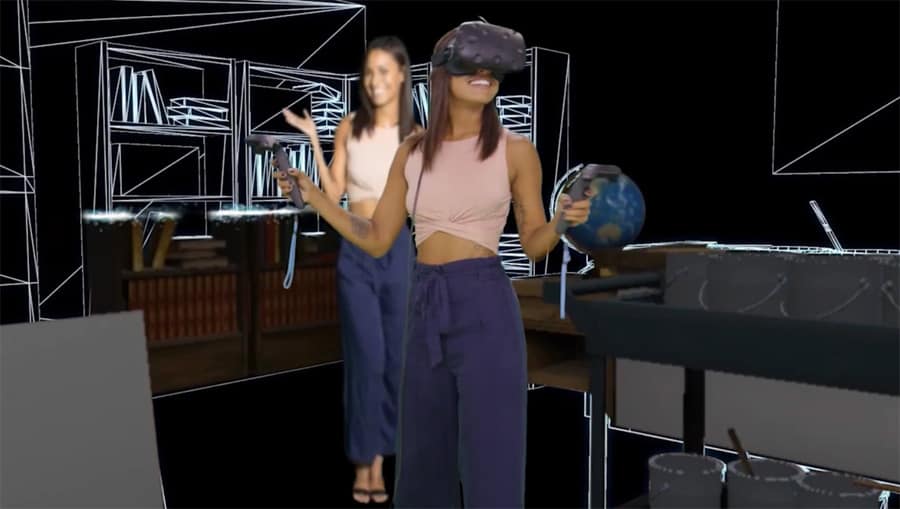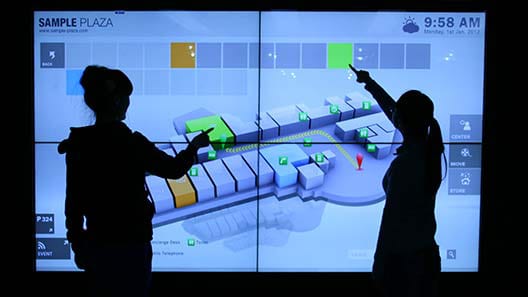Trends and Benefits of Event Technology: How This Latest Shift will Transform Your Event
What used to seem like science fiction is now possible thanks to continuous technological advances. These new practices and tools are drastically changing the way we interact with the world around us, including attending and participating in a variety of events. The event technology space is constantly evolving, and embracing these trends will enable you to impress your guests and attendees while creating a more efficient and inspiring event.
What is Event Technology?
The event technology space consists of any digital or computer-enabled tool which is designed to help planners, exhibitors, or other stakeholders complete tasks pertaining to the event and their work as coordinators or vendors. The types of event technology tools currently available encompass a broad range of capabilities but could include event marketing software, event management software, designated mobile apps, mixed reality stations, artificial intelligence programming, and data collection tools.
Before event technology, hosting and participating in events was a very manual process. Attendee lists were printed and referenced on-site to verify registration, could not be updated in real-time, and quickly became out of date. Promotional materials were limited to specific mediums and, therefore, to the audience they could reach. And measuring the effectiveness of various components of the event was nearly impossible. Event technology aims to solve most if not all of these problems to create a more streamlined experience for the planner and guest, allowing for enjoyment of the event with fewer miscommunications and more systematic data collection. Event technology trends show that utilizing technology is influencing every aspect of the guest experience, from the moment they first see an advertisement until the time they leave the event, there is a full stack of technological applications that can assist you in creating a personalized experience for every single attendee.
Top 5 Event Technology Trends
As technology advances, offerings are becoming more affordable and easier to integrate which, in turn, allows more event planners to incorporate technology into their events. Marketers, sponsors, and other stakeholders are quickly becoming tech-savvy and data-oriented, in order to deliver measurable value at every single event they take part in. As a result, plenty of incredible and creative new event technology trends are beginning to take shape within the industry. Some of our favorites include:
1. Mixed Reality – Augmented Reality (AR) and Virtual Reality (VR)
Combining real-world objects with virtual experiences, mixed reality covers the broad spectrum of reality technologies ranging from completely natural environments to fully digital ones. This is known as the Mixed Reality Continuum and also includes augmented reality and virtual reality technologies. The variation in virtual components among these technologies offers a lot of flexibility to the designer to create customized experiences for their event. Some common applications include remote attendance, simulation training, transparent displays, and photo opportunities.
2. Facial Recognition
Though the technology has long been available in the consumer market, facial recognition is only now being utilized in the event industry as it can help increase efficiency and security at events. If used as part of the check-in and registration process, facial recognition technology can eliminate mistakes while speeding up a process that once required manual identification checks and adds functionalities such as checking attendees against a variety of lists or tagging them in event photos.
3. Smart Flooring
Incorporating smart flooring into your event venue is an unobtrusive way to collect and analyze critical event data that will help you identify traffic flow patterns in real-time. Armed with this information, you can use the real-time data to quickly address bottlenecks or monetize key locations for sponsorships while the event is still taking place as opposed to waiting for the next event to iterate and improve.
4. Projection Mapping
Using 3D projection mapping in your event can transform a lackluster room into a completely new, immersive environment. With the advancement of software and hardware technologies, imagery can be projected onto 3D objects, as opposed to traditional flat surfaces, creating an engaging event experience. Projections can range from 3D artwork to a complete life-like environment. The technological ability to completely control and customize projections give you the opportunity to create an experience as great as your imagination.
5. Event Personalization
Many consumers and guests have come to expect a personalized experience at the events they choose to attend. Regardless of their perceived status, they want to feel like their preferences and interests are taken into consideration when planning their overall experience. Using technology platforms, you can help cater to this expectation and delight your attendees. For example, you may send them a push notification through the mobile event app when they are in close proximity to a vendor they expressed an interest in or suggest they attend a session based on their previous click-through interactions with your marketing content. Taking these extra steps into the planning process of an event will convey to your guests that they are more than just a number to you and that you truly want them to have the best experience possible.
Benefits of Event Technology
The benefits of incorporating technology into your event management are as varied as the technology itself. However, there are a few key reasons any stakeholder should consider integrating a tech stack into their next event production and process.
1. Increased Attendee Engagement
When putting on or participating in an event, one of the biggest challenges is to capture the attention of your audience. Unfortunately, today’s content consumers have a lot of information flying towards them from all directions, so they have become accustomed to filtering most of it out unless you can hook their interest. When appropriately deployed, interactive event technology can have a positive impact on your audience engagement. For example, live response systems can allow attendees to answer questions asked by presenters in real-time.
2. Measuring Success
How you define success will depend on the event goals you have previously set for yourself. Regardless of what the metric is, technology will help you measure it without manual calculations. In some cases, you may only have to log in to a dashboard to find your answer or take the time to step up a piece of technology prior to your event and then check-in after the event has closed. Whether you measure social media activity, event surveys, or merely the number of total event attendees, event technology will simplify and expedite the process of tracking and monitoring success.
3. Consistent Communications
An event does not begin and end at the times published in advertisements. Instead, there are often weeks or even months leading up to the event full of planning and sometime after left to wrap things up. Event technology gives you the opportunity to communicate with attendees long before and long after the event is scheduled to take place by creating and delivering personalized, relevant, and timely content. For example, you may use email marketing campaigns to help build excitement prior to the event, recommending sessions a particular guest might find interesting based on their previous click-throughs and interactions with your content. At the event, you may deploy a smartphone application that will help remind attendees of session start times or allow them to schedule one-on-one time with certain vendors. After an event, you may follow up with a survey to provide more content relating to sessions a participant attended. You can be as creative with these communications as you would like and create valuable video content, but ultimately, keeping in touch is an integral part of the attendee experience at any event.
4. Data Collection
Beyond measuring success, you must also be able to collect relevant data and insights to fuel the analysis that will determine success. Gathering such information will also help you to improve certain aspects of your event and ensure that your guests continue to have the best experience possible every time they interact with your organization. There is a variety of technical applications that can be utilized in this capacity including monitoring the open rates of your email communications, used radio-frequency identification (RFID) technology to measure traffic flow within the event space, or launching surveys and questionnaires in the mobile event app on smart devices. By digitally collecting this information, you will be able to quickly and easily manipulate the data to identify trends in attendee behavior and use them to inform real-time or future.
5. Making an Impression
In addition to the practical applications and benefits of using technology at an event, it will also help you to impress your guests with awe-inspiring experiences. Implementing technical capabilities such as lighting, sound, and even virtual reality experiences will leave your attendees with a lasting impression and have them excited to come back to your next event. Going for the most significant wow factor with mixed reality technologies can often create the most memorable experiences, but it is essential not to neglect the finer details that could be enhanced with much simpler technology. For example, the use of light and sound can easily set the entire mood and pace of your event, highlight a specific product or area, or add a dramatic effect to the venue.

- Courtesy of L.A. Photo Party
Putting It All Together
Technology as an entire sector will continue to advance, and if you want to stay on the cutting edge of the event industry, it is important for you to stay abreast of these changes as you are event planning. As you begin to learn about and understand new developments, think creatively about how they could be applied to an event setting. This is the only way to stand out from the crowded marketplace of the event industry and keep your audience engaged. With a few integrations, you will quickly be able to transform your event and create a memorable experience for your guests that will keep them coming back to you.
Ready to get started? Check out our offerings at Vario Reality and contact us for a consultation. Our team has developed a deep understanding of the mixed reality and artificial intelligence technologies currently available in order to help our clients design incredible events for their guests. We pride ourselves on working with clients to bring their creative visions to life. So if you have an idea in mind for your next event agenda, we can help make it a reality.







